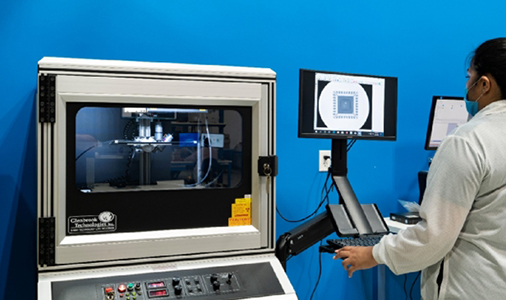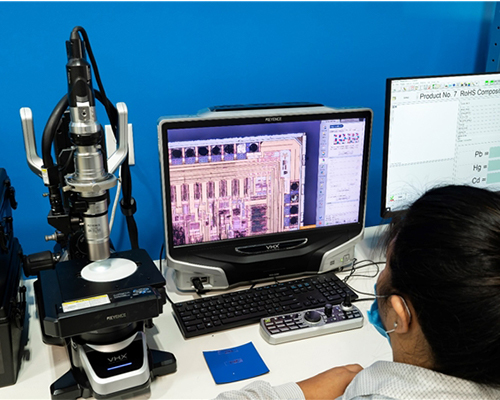QUALITY CONTROL
|
| ||
Before the product is shipped, a full inspection will be carried out on the IC and LCD displays, whether the function is oxidized, and the appearance. When appropriate, an aging test is also carried out on the specified batch.
|
Always observe the following: ● Do not leave the ICs in any place at high temperature and high humidity, leading to drastic fluctuations in temperature, generation of large quantities of stains and dirt or corrosive gas. ● The epoxy resin used in the packages can absorb moisture from the air which can cause internal peeling and cracks in the resin, so it is recommended that the ICs be stored in low humidity environments. The ICs can be stored at a temperature of 5°C to 30°C and relative humidity of 40% RH to 70% RH. It is recommended they be used within 1 year of delivery. ● Do not apply excessive force to ICs when packed and stored because it may deform their lead pins. ● Preferentially use anti-static and clean packaging materials.
|
|
|
|
Physical inspection is to judge whether the quality and performance of the chip meet the requirements by observing the physical characteristics of the chip. The main physical inspection methods include optical microscope inspection, scanning electron microscope inspection, atomic force microscope inspection, X-ray diffraction inspection, etc. Optical microscope inspection is mainly used to observe the morphology, pattern and structure of the chip surface, including crystal defects, pollution, wear, scratches, etc. Scanning electron microscope inspection can observe higher-resolution chip surface details, including crystal defects, crystal structure, circuit morphology, etc. Atomic force microscopy can detect more finely the morphology and structure of the chip surface, such as observing the crystal lattice and the atomic-level details of the surface morphology. X-ray diffraction detection can be used to analyze the structure and properties of chip crystals, including surface crystallinity, impurity content, etc. | ||
Electrical testing is to judge whether the quality and performance of the chip meet the requirements by testing the electrical characteristics of the chip. The main electrical detection methods include IV test, CV test, high frequency parameter test, power consumption test, etc. IV test refers to judging the performance of various devices in the chip by measuring the current-voltage characteristics of the chip. The CV test refers to judging the quality of the MOS structure in the chip by measuring the capacitance-voltage characteristics of the chip. High-frequency parameter testing refers to judging the performance of the chip in high-frequency applications by measuring the high-frequency characteristics of the chip, such as S parameters. The power consumption test is to judge the energy consumption performance of the chip by measuring the power consumption level of the chip under normal working conditions.
|  | |||
 |
This is to verify icchips and lcd displays are original, new and unused. Marking the durability and solvent resistance, resurfacing, dimensional verification, code matching, high magnification inspection of body and terminal condition are standard methods in our inspection process. Our QC engineers review all inspections and observations to assess whether we have discovered new counterfeit technology or manufacturing anomalies.
Encapsulation etches away the plastic cover of the die, exposing the die to any plastic IC package. We were able to see if there was actually a die inside the package in the process. DECAP will also show die topology, manufacturer's markings, copyright date, part number, die size conformance across date codes, and bond wires.
Test whether the voltage, current, resistance, and capacitance of the input, output, and power pins of the product are normal. | |||
X-RAY can confirm whether the wafer, bonding wire and chip bonding are intact; it detects internal components based on the images obtained by the X-RAY machine, and will detect short/open circuit inside components under tests.ROHS testing is a device for environmental protection testing of lead content in product pins and solder coatings through photovoltaics.
Programmer test is to test whether the electronic components are blank, non-programming and its usability. It mainly applies to OTP. Memory types tested by components such as EPROM and EEPROM. The programming tester is a special program for testing ID reading, writing, verification programs, and blank checks for digital memory microcontrollers, microcontrollers, etc. In order to ensure the correct reading and writing of the internal memory of the chip, we have carried out a storage capacity test on the digital memory and flash memory.
|  | |||
 |
Solderability is a test to determine if a component will exhibit soldering pr |